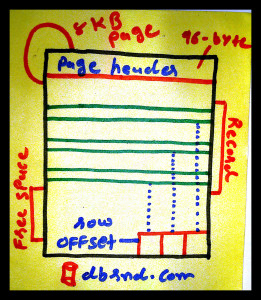This article is half-done without your Comment! *** Please share your thoughts via Comment ***
The Page in a SQL Server is a small storage unit of data and it resides in a Data File.
When we write the first row in a table, it creates an 8KB page to store the data, and it assigns 0 as a starting number and sequentially increase in a data file.
Each data file has a unique file ID number, and each page has a unique page number.
We can store 128 pages per one megabyte.
The 8KB page doesn’t associate with a single row of data.
If row size is small, multiple rows can store into an 8KB data page. If row size is large and 8KB page is not sufficient to store it, it creates multiple pages.
Each table has a separate data page, and it never merges data
from multiple tables. Even if we have small size of the table, it also creates separate pages for each table.
SQL Server uses different types of pages to store various types of data like Index, Data, Text, BLOB.
The different type of pages are:
Data: stores user’s data, but type of text, ntext, nvarchar(max),varchar(max),varbinary(max),xml, and image.
Index: stores index related data.
Text/Image: stores all large object data type like text,varchar(max).
GAM: stores global allocation map information about extents.
Page Free Space: stores information about the free space of the pages.
IAM: stores index allocation map information about the indexes.
BCM: stores bulk changed map information of the extents.
The internal structure of the Page:
A Data Page consists of three main sections which are Page Header, Actual Data and Row offsets.
Each Data Page has 96-byte header to store system information like page number, page type, free space, page owner’s object id.
After the header information, actual data rows are put on the page serially.
There is one-row offset table at the end of the page, and it stores information about each row.
The records within a page are not always stored in continuous logical order, and the free-space on a page is not always maintained in one contiguous block.
If we delete a record, it creates one free hole within the page, and immediately it cannot be used by new INSERT.
It creates fragmentation on a page and when it is necessary, INSERT check the free block and try to insert best match record into that free block.
This all row’s information kept by the Row offset table.
The Database Administrator also has to perform some maintenance task to remove fragmentation from the data pages.



